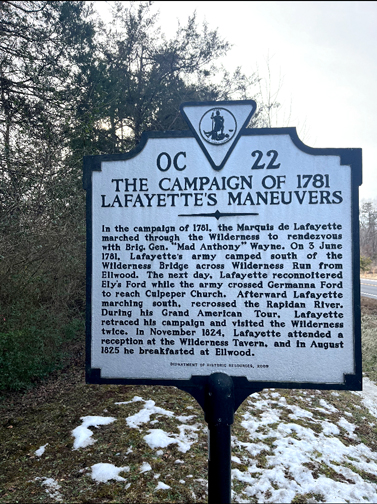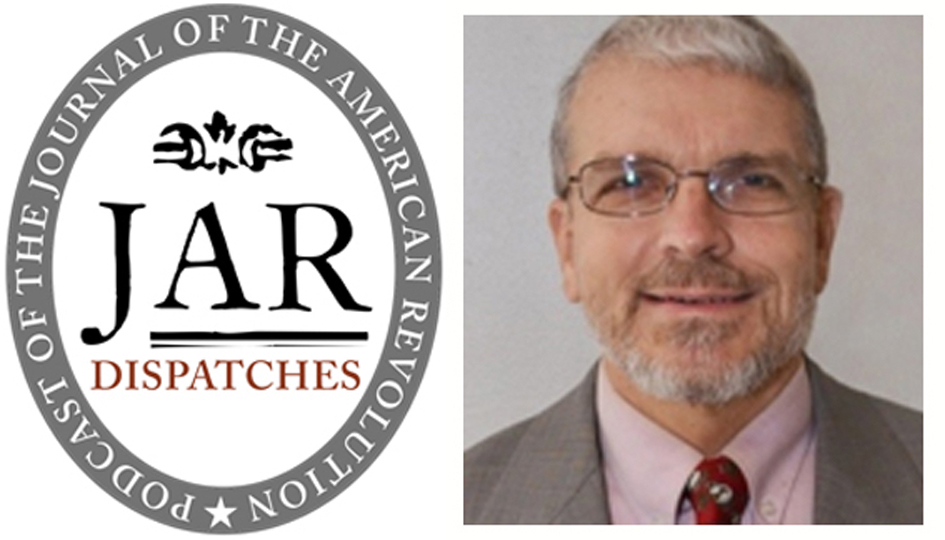Read the newspapers published during the American Revolution, and you’ll find descriptions of deserters. It doesn’t matter which newspaper, or whether it was published in an American-held or British-held location; men deserted from the American, British, French and German regiments serving in America, and their officers sometimes advertised rewards for their return.
Looking deeper into the matter, we can turn to regimental muster rolls – documents that record the names of soldiers. Examine the muster rolls of just about any regiment for just about any year, and you’ll find deserters. It quickly becomes apparent that many more men deserted than were advertised. Overall, deserters constitute only a few percent of the thousands of soldiers in each army, but the ease of finding mentions of desertion shows that it was a widespread and persistent military problem faced by all armies.
Look more closely at the right combinations of muster rolls, though, and an interesting phenomenon becomes apparent: many men who deserted soon enlisted again – on the other side! It wasn’t a one-way street, either; Americans deserted and joined British or Loyalist regiments, and British and Loyalists soldiers deserted and joined American regiments. Some went back and forth more than once. The scale of this turn-coating is only recently being revealed, thanks to patient and meticulous work by several researchers.[1] There’s not enough data yet to do useful statistics, but it’s clear that many hundreds of men switched sides at least once during the war.
When I brought this up to a colleague some years ago, he dismissed the notion that we could trace a deserter from one army to another: “Wouldn’t a deserter change his name?” Well, no, at least not always. In fact, it seems that relatively few deserters changed their names – even during this era when there were no personal documents like licenses and such, and a man could claim any name he wished. In general, it’s quite easy to see the date of desertion of a man on the muster roll of one regiment, followed a few days later by the enlistment of a man by the same name in a regiment serving on the other side of the lines in the same area. If this occurred only once or twice, we could call it a coincidence of different men with similar names. But there are hundreds of instances, sometimes with explicit information about the enlistee being a deserter from the enemy.
Take, for example, Daniel Sullivan and Francis Overton, British soldiers in the 22nd Regiment of Foot. Both Irish, and both were relatively new soldiers. Sullivan had enlisted in Ireland in March 1775 when he was 23 years old, a fairly typical age for men to join the British army. He was recruited when the regiment was building up to full strength in anticipation of embarking for America. Overton enlisted later in 1775 or in early 1776, after the regiment was already in America; he was part of the large augmentation (increase in strength) ordered for regiments in America after the war began, and he arrived in New York to join his regiment in October 1776.[2] He was only 19 when he enlisted, younger than most British recruits but nonetheless old enough for a military career.[3]
The 22nd Regiment was sent to Rhode Island in December 1776. Just nine months later, Overton and Sullivan deserted together on the night of 3 September 1777.[4] They had been seen going towards the town of Newport during the night, which led British authorities to suspect that collaborators in town were helping British deserters escape from the island to the mainland. A 100 dollar reward was offered “to any person who will take or shoot them,” but no information was forthcoming.[5]
Three days later the two men were in Providence, where the Rhode Island Council of War resolved, on 6 September, that they “be allowed and paid each Six Dollars out of the General Treasury in order to carry them into the Country to enable them to get Work to maintain themselves” because they were “destitute of Money.”[6] This was a gracious award from the Council which would allow the erstwhile soldiers to get far away from the front lines, away from any risk of capture by sudden British incursions. They’d find many opportunities for work, with so many young American men away from their farms serving in the army.
Overton and Sullivan did find work, but not the sort of work that the Council of War had in mind. On 8 September they enlisted for three-year terms in the 5th Massachusetts Regiment which was recruiting in Attleboro just northeast of Providence.[7] This was a bold move: as deserters, they were already at mortal risk if they were recaptured by British troops; joining the American army not only made their capture more likely when their new regiment went into combat, but also almost guaranteed execution if they were caught. But they were doing what many dozens of other deserters did, regardless of the risk. Perhaps the enlistment bounty money was too tempting to forego, or perhaps soldiering was simply an obvious or familiar choice. And they enlisted under their own names, either not foreseeing or not fearing capture.
British subjects deserting their colors and enlisting with the other side could be construed as a act of sympathy towards the American cause, incited by an inherent love of liberty. More likely it was a simple act of opportunism. Neither man stayed in their new army nearly as long as they’d served in their old one. Francis Overton deserted a month after enlisting, on 8 October 1777. Daniel Sullivan lasted a bit longer, but deserted in December.[8] Although they weren’t advertised in newspapers, their descriptions were recorded probably so that other recruiters could be on the lookout for them. Overton was 21 years old (when he deserted in late 1777), born in “Britain,” 5 feet 10 inches tall, with dark eyes, dark hair and a dark complexion, and had given his place of residence as Medway, Massachusetts. Sullivan was a 25 years old, born in Ireland, 5 feet 6 inches tall, also with dark eyes, dark hair and a dark complexion; he gave his residence as Attleboro.[9]
Deserters once again, Overton and Sullivan now had to take different measures. They couldn’t simply return to the British army again (many deserters did, but we’ll save that for another story), and now they were fugitives on both sides of the lines. Although they’d deserted from the 5th Massachusetts at different times, Overton and Sullivan managed to join up with each other and they fled to Connecticut. There, they got into further mischief revealed by newspaper advertisement from early February 1778:
Stop Thives! [sic] Came to the house of the subscriber, on the 25th of January 1778, one James Hamilton, about 5 feet and an half high, well sett, black short curled hair, black eye brows, light blue eyes, can read and write well; had on when he went away, a white out-side jacket, with one button on each sleeve, at the wrist, a pair white breeches, much wore, a pair blue and white stockings, his left thumb (upper joint) put out, so that he can slip it in and out. Likewise, one Patrick Brian, about 6 feet high, a sprightly well limbed man, short strait brown hair, light blue eyes, speaks broad; had on when he went away, a green coat faced with red, and yellow buttons, a white coarse linen shirt, a pair white cloth stockings, a good felt hat, with a metal button thereon: Both these fellows were Irishmen, said to desert from the 22d regiment on Rhode Island the 6th day of September last, and had passes from Governor Cook at Providence, to go into the country to get work; they tarried with me till Friday the 30th ult. (after dinner) then went off without paying for their board, and carried off one white Holland shirt and sundry other things, to the value of 22 or 23 dollars. Whoever will take up said villains, and bring them to Norwich or New London jail, so that justice may be done them, shall have Six Dollars reward, and all necessary charges paid by Ebenzer Grover.[10]
At first blush this ad seems to have no relevance to our story, as it seems to pertain to different men. But no man named James Hamilton or Patrick Brian ever served in the 22nd Regiment. Instead, it’s clear that these men were using aliases. The date of desertion from the British army, the physical descriptions, and the pass from the Rhode Island governor make it obvious that these men were actually Francis Overton and Daniel Sullivan. Only their eye color does not match up with other evidence. Perhaps it was Overton, or Brian, whose “broad” speech gave so much information about them having been British deserters, right down to the regiment and date (which probably corresponds to the date of the pass from the governor). Apparently they were wise enough not to mention their American service.
Unfortunately this is the last information we’ve found on this adventurous, troublesome pair. Perhaps they changed their names yet again in an effort to throw pursuers off their trail. We don’t know if they were successful then, but they did manage to give historians the slip.
[FEATURED IMAGE AT TOP: French Revolutionary infantry and cavalry in tavern. Source: Anne S. K. Brown Military Collection, Brown University]
[1] See, for example, Todd W. Braisted, “A Patriot-Loyalist: Playing Both Sides,” Journal of the American Revolution, https://allthingsliberty.com/2014/04/a-patriot-loyalist-playing-both-sides/
[2] Muster rolls, 22nd Regiment of Foot, WO 12/3872, British National Archives.
[3] For statistics on British enlistment, see Don N. Hagist, British Soldiers, American War (Yardley, PA: Westholme Publishing, 2012), 302-303n11, 307n1.
[4] Muster rolls, 22nd Regiment of Foot.
[5] Newport in the Hands of the British: A Diary of the Revolution. The Historical Magazine, Vol. 4 No. 1 (1860), 4.
[6] Rhode Island Council of War Papers, MC3 Vol. 2 p. 100, Rhode Island State Archives.
[7] Massachusetts Soldiers and Sailors of the Revolutionary War (Boston, MA: Wright and Potter, 1903), 11:716, 15:246.
[8] Massachusetts Soldiers and Sailors, 11:716, 15:246.
[9] “Descriptive Roll of deserters, from the 5th Massachusetts Regiment of Foot Commanded by R. Putnam Esq.” M-246 reel 36 frame 487, National Archives, Washington, DC.
[10] Norwich Packet, 2 February 1778.









One thought on “Would they change their names?”
The deserters in the Quebec area, mostly soldiers from the Brunswick Riedesel regiment, went as far as borrowing French-Canadian patronymes (family names) to disappear in the crowd. Jean-Pierre Wilhelmy has written extensively on this matter. Johannes Helmut Merz has written also on these deserters who went to live in Ontario, Canada, after the Revolution. He gave a list of no less than 125 deserters who joined a Loyalist regiment before the end of the Revolution, hoping to get a land grant once in Canada.
This article by Don N. Hagist could be the tip of the iceberg. It sure is revealing for any descendant of a Hessian soldier.